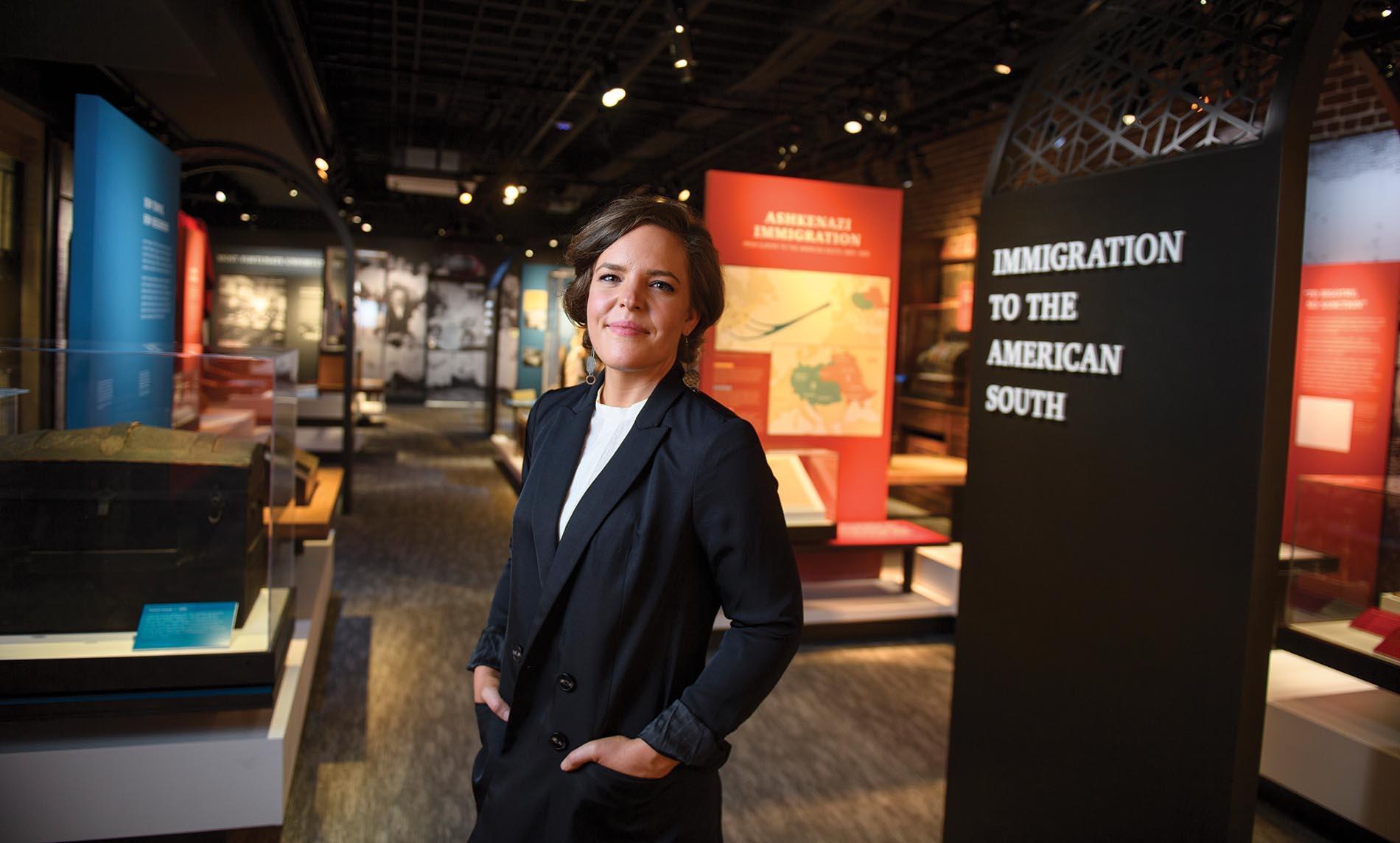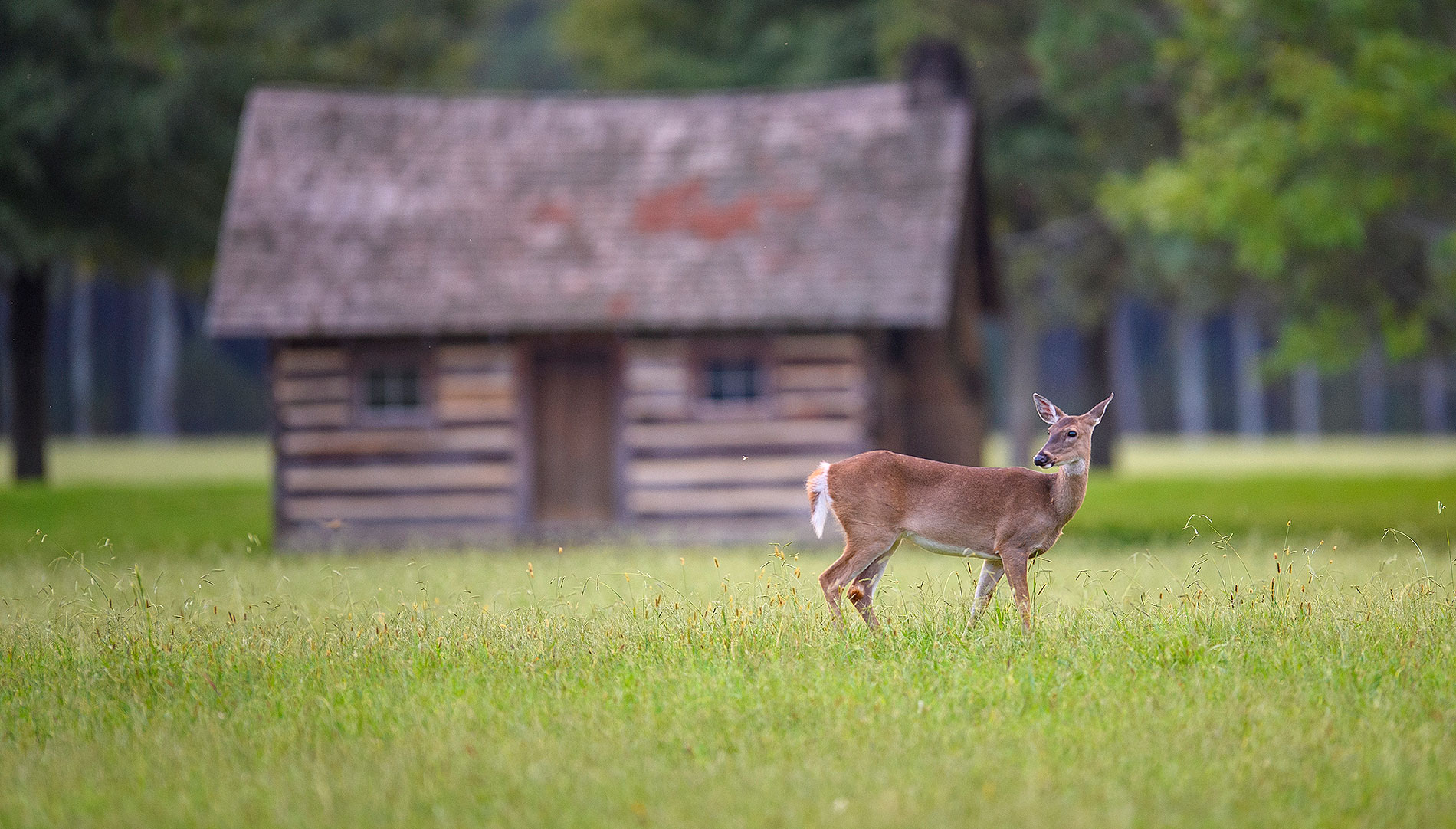By Karilon L. Rogers
Photography by Brant Sanderlin
The opportunity to plan and open an important museum would signify the height of success and realization of a dream for most curators. For Anna Tucker (08C), charter curator for the brand-new Museum of the Southern Jewish Experience in New Orleans, it is all that and more.
When Tucker decided as a high school senior to leave behind her love of music and anticipated life as a classical pianist, she wasn’t running away from anything. Quite the opposite. While studying in Israel that year on a Birthright Scholarship, she felt something calling more urgently to her – something that shifted her focus and shaped her future.
Tucker had spent many of her early years in Maine, Rhode Island and Georgia coaxing Bach, Beethoven, Ravel and Rachmaninoff from her piano’s ivory keys. Music was her world. But while visiting important sites in Israel with her classmates, she was fascinated watching people of all ages and backgrounds connecting with the history of the ancient land.
“I became interested then in how people engage with history and how it influences their view of their own lives and the world around them,” she said.
It was an interest she couldn’t shake, and from that point on, everything was, quite literally, history for Tucker. Helping others engage with the past became her life’s work, culminating in the 2019 opportunity to curate a new museum focused on an intriguing meld of her academic and professional interests: How Jews in the American South influenced and were influenced by history.
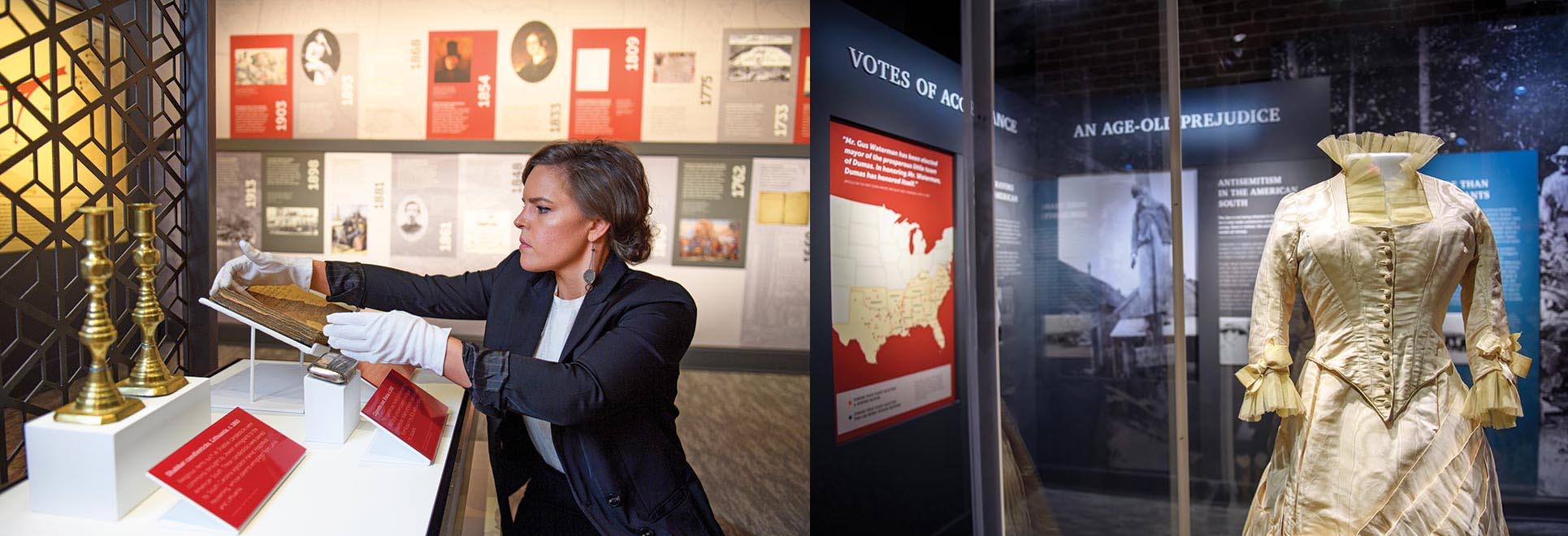
The making of a museum
With 9,000 square feet of exhibit space, the Museum of the Southern Jewish Experience, which just opened May 27, occupies a beautifully restored historic structure in the heart of New Orleans’ busy Arts District. The highly regarded museum-planning-and-design firm of Gallagher & Associates, which created the exhibits at such eminent institutions as the National World War II Museum and the National College Football Hall of Fame, was charged with designing the MSJE’s exhibits, which span more than 300 years of Jewish history in 13 Southern states.
Multimedia displays illustrate how Jewish immigrants and succeeding generations adapted to life in the South, forming bonds of deep friendship and community with their non-Jewish neighbors. Exhibits also address issues of race and antisemitism and the many ways Southern Jews have navigated them at different times.
“Southern Jews have more often been a part of their communities than apart from them,” said Kenneth Hoffman, the MSJE’s executive director and Tucker’s supervisor. “This contrasts with America’s urban immigration centers where Jews formed more insular enclaves.”
The museum’s collection began with the artifacts in the collection of the original Museum of the Southern Jewish Experience established in 1986 at URJ Henry S. Jacobs Camp and later relocated to the Goldring/Woldenberg Institute of Southern Jewish Life, both in Mississippi. Moving those artifacts to New Orleans was Tucker’s first duty.
“The very first thing our museum director did was put me in a truck and send me to Jackson (Miss.) to pack and move what was then our entire collection,” Tucker remembered with a smile.
It took her from April until June to finish the task, but it was well worth the effort because she was able to carefully examine and inventory every item, including family photos, important documents, two organs from closed synagogues, an 8-foot store sign, a well-known Jewish merchant’s prosthetic leg and a silk wedding dress from 1885.
Since then, many other pieces have been donated to the more than 4,000-artifact collection. Working with Hoffman and Gallagher & Associates, Tucker first selected potential images and items for display and then drafted a “script” for museum flow – a manuscript to which literally thousands of changes and edits were made as museum content was fine-tuned. Eventually, display panels were printed.
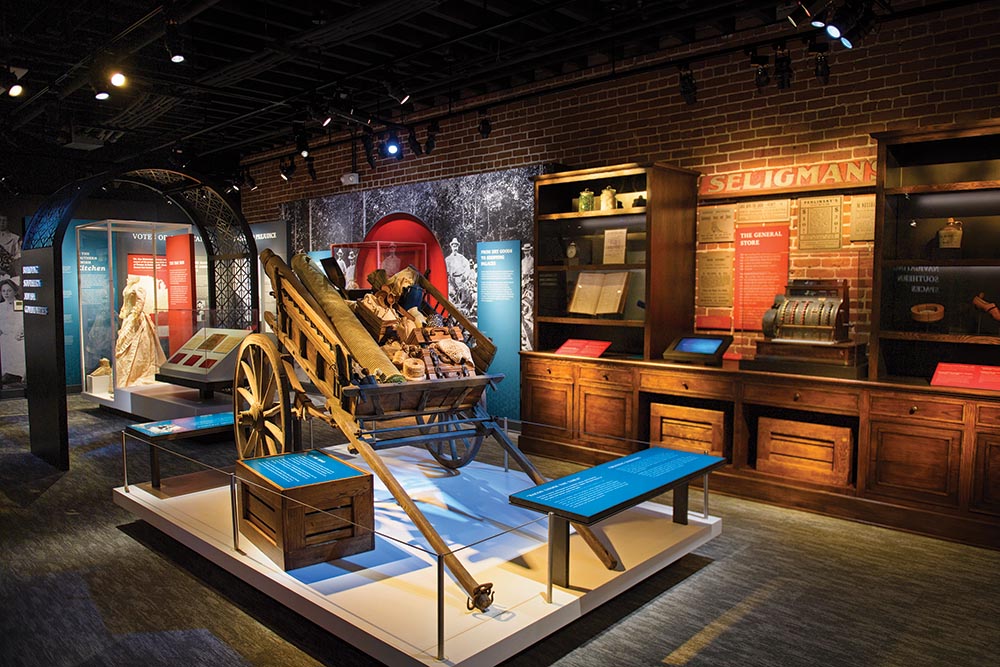
“While I am always nervous when it is time to print the panels, I take heart that a museum is a living thing,” Tucker said. “Nothing is ever ‘final’ in a museum. It is our responsibility to continue to update and change as new information and perspectives come to light.”
The museum offers three main galleries. The first, focusing on Jews becoming Southern and building Jewish identities in the Bible Belt, covers such topics as immigration and internal migration, slavery and the Civil War, peddling and merchant life, and antisemitism.
The second concentrates on the foundations of Judaism, while the third is all about the 1900s, including Zionism; Holocaust survivors settling in the South; Southern Jewish soldiers serving in Europe and the Pacific during World War II; and civil rights, including the surprisingly wide-ranging responses of rabbis.
Also included are areas on the roles of Southern Jews in popular culture and in the transformation of the American South; summer camps and their role in developing Jewish identity; and the vibrancy of Jewish life.
“Our museum is a conversation,” Tucker said, “focused on the importance of diversity of experiences and perspectives. Like everyone, Southern Jews all had unique experiences and histories. Our museum encourages visitors to explore their own history.”
Tucker added that the museum demonstrates that the Jews who immigrated to the South and the generations who followed serve as examples of how people from a different religious group could live among people not like them, exploring and maintaining their own background while also becoming and being “Southern.”
“It was not always smooth sailing, and there are numerous instances of antisemitism throughout the years,” Tucker said, “but Southern Jews showed that communities are vibrant and strong because of, not in spite of, their diversity.”
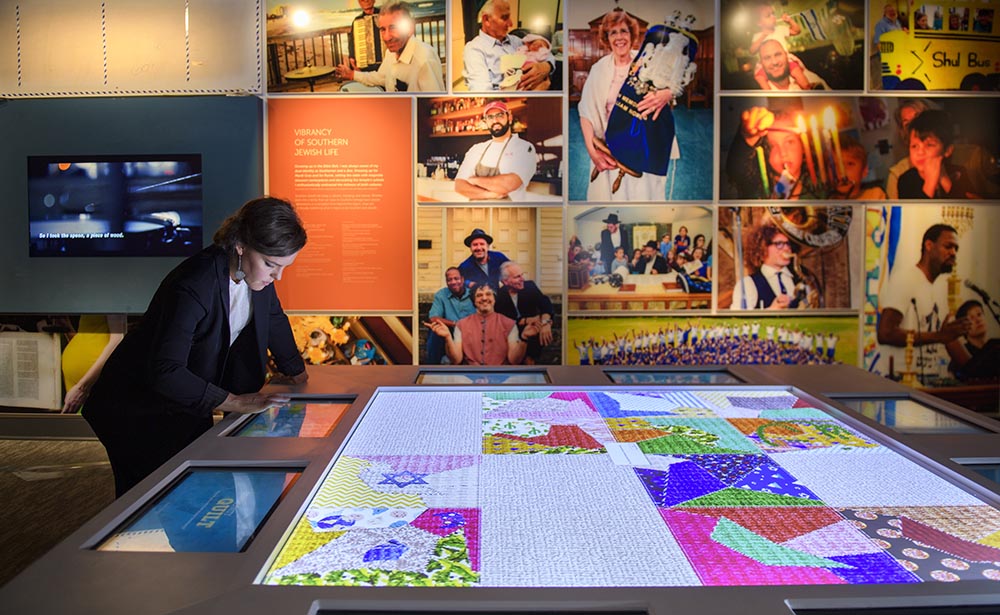
From Berry to the Big Easy
When Tucker returned to Georgia after finishing high school in Israel, she envisioned herself studying history at Emory. Someone suggested she look at Berry, citing its beauty. So, she took a trip to Rome.
A chance hallway meeting with Associate Professor of History Dr. Amy Johnson sealed the deal.
“She spoke to me in the hall and invited me to sit down,” Tucker remembered. “We ended up talking for 45 minutes. I was blown away that a professor would take so much time with me and by how passionate she was about her subject. I applied to Berry that day. I knew I’d never get that kind of one-on-one elsewhere.
“Then, Dr. Johnson was in a car accident and passed away at the end of my first semester. I was crushed and thought about transferring schools. I visited Dr. Larry Marvin [professor of history], who reminded me I still wasn’t going to get the kind of one-on-one that I got at Berry. He became my mentor. So, Dr. Johnson was the reason I came to Berry, and Dr. Marvin is why I stayed.
“Berry also helped me heal. After I left music behind, I missed it, even though I knew history was the field I preferred. I spent a lot of time walking around Berry’s campus. Its beauty helped me get past the loss of something I loved.”
Dr. Marvin remains a mentor today, along with Dr. Anne Lewinson, professor of anthropology, who taught Tucker “the importance of different perspectives and ‘seeing’ through others’ eyes,” and Dr. Christine Anton, professor of German, who deeply engaged her in a language so helpful in her work with Holocaust materials.
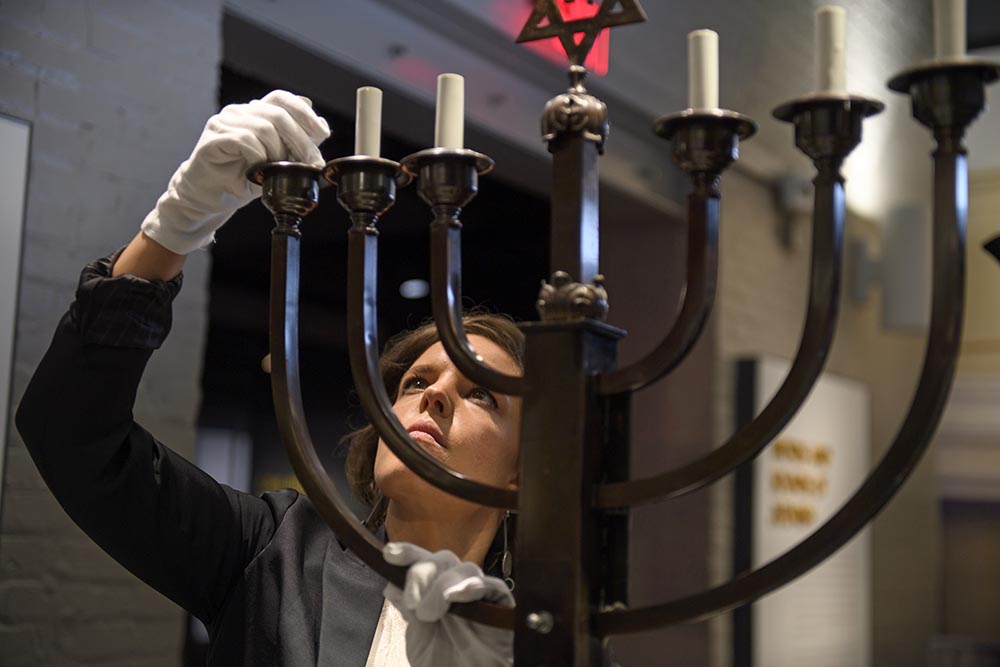
“When I graduated in 2008, it was not a good time to be a history major,” Tucker said. “But I found an incredible opportunity in the history field right out of Berry. My mentors knew me. Their references and guidance helped immeasurably.”
Her first position was that of assistant museum manager for the Museum of History and Holocaust Education at Kennesaw State University. After three years she was promoted to communications manager of the expanded Department of Museums, Archives and Rare Books. In 2017, she was named special projects curator, the position she held when the New Orleans job became available.
Tucker is grateful she didn’t have to move on to different museums to advance, this time crediting the head of her department, Dr. Catherine Lewis, who taught her the ropes, encouraged her to learn all aspects of museum work, and “kept” her at KSU.
There really are unicorns
While working, Tucker earned a Master of Arts degree in history from Georgia State University. Since she had strong experience at KSU in “community curation” – telling the history of a town or other group – and her master’s thesis focused a great deal on Southern Jewish history, the position in New Orleans telling the stories of Southern Jews seemed almost too good to be true. She didn’t hesitate to accept when it was offered to her.
“Finding an opportunity to combine your academic research with the chance to open a new museum rarely, if ever, happens,” she declared. “This was truly a unicorn job position.”
Unicorns normally appear only in fairytales, yet Tucker found one in real life. The woman initially intrigued in high school by how people engage with history and how it influences their view of their lives and the world around them had her own life and world changed by it.
All these years later, the changes seem to be working out quite well, making her departure from music worth the sacrifice. Tucker couldn’t be happier both working in her “unicorn” position and living in New Orleans, and her supervisor seems more than pleased.
“I’ve been in the museum field for 25 years now,” Hoffman declared, “and rarely have I worked with someone as dedicated, knowledgeable, hard-working and creative as Anna. She’s not just a rising star in the Jewish museum world, but in the museum world in general. I daily count my lucky Jewish stars that I get to work with Anna.”
